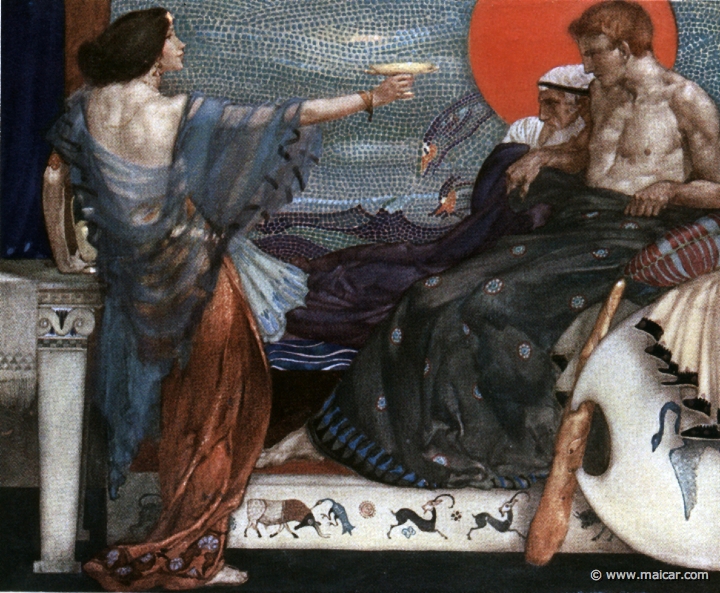The study of Ong, Plato and Homer together allow our thoughts to converge on the practice of oration as compared to the technology of writing, and the effect oration has had on civilizations past and present, and equally important what ill-effects have occurred as civilization moves away from honoring oration.
 |
| Uni-dimensional writing |
 |
| Misuse of Technology, or not ready for technology? |
Plato seems to agree with the perspective that writing is a uni-dimensional mode of communication, as compared to speech, when he pens a dubious view of the new technology in Socrates’ dialogue with Phaedrus—in fact we feel almost a disdain for writing in the following exchange, “I cannot help feeling, Phaedrus, that writing is unfortunately like painting; for the creations of the painter have the attitude of life, and yet if you ask them a question they preserve a solemn silence.” In this Socrates also shares that he fears that technologies and new discoveries (writing) may become viral and spread to those who are not ready for it nor understand it, and thus may misuse it. Interestingly, this same concern for the “misuse” of the newest discoveries is a cycle we see throughout history, and I hypothesize this is a result of a age-old and general feeling of superiority and hubris by man. Those that “have” consider those that “have not” to be inferior and, thus, have the opinion that the “have nots” would be unable to comprehend or make use of the newest innovations in an appropriate and approved way.
 |
| Theseus son of Aegeus |
In fact, the fear about the misuse of writing is indeed rampant in the oratory cultures as well, as oration is indeed prone to misuse and misunderstanding. As revealed by Ong, the orator, in the act of reciting the stories, changes the content based on the audience, his own mood and even the political events of the day. Just because an orator says he used some verse as before doesn’t mean he used it word-for-word as we would interpret from a literal, verbatim-focused society. So rather than subordinating to the parent verse, an orator uses an additive technique that enhances the story and thereby changes it, even if the change is slight. To moderate this potential misunderstanding, aggregative methods are incorporated into oration that allow for clarity from the reader’s point of view. For example, to ensure the reader understands who a character is, name-triggering phrases such as “godlike Plyphemus, Theseus son of Aegeus, or dread son of Saturn” are used to ensure the reader is tracking with the story line in the Iliad. When these phrases are regularly sprinkled about in the text, this may sound repetitive to the reader of the written word, which rewards the concise writer who uses sparse word choice in their story. However, when hearing the entire Book 1 of the Iliad, these repetitive structures are key to helping the reader follow along.
We see this repetitive nature of oration as key to modern day success of public speakers, a recent examples of this strategy is from President Barak Obama’s presidential inauguration speech sprinkled liberally with the phrase “Yes we can!”
Although we see some traces of the oratory tradition in modern day, the loss of oration as a tradition in the culture of the United States has had negative effects on a specific population— that of our elders which belong both to the silent generation (1927-45) as well as the baby boomer generation (1946-64). Elders of communities that prized oration used to hold the collective’s past in their minds, reinforcing their place of importance and honor in the community as they shared their memories through stories and parables. Their specialty was the
 |
| Oratory, or storytelling, by elders |
Comparatively, the US culture, in which I live, has an aging population where almost 13% is aged 65 or older, a percentage that is estimated to grow to almost 20% by the year 2030. To care for this growing percentage of the population, one in four households provides care to a relative or friend aged 50 or older (www.pepperinstitute.org). This means that 75% of the aging population in the US is or will be cared for in assisting living communities, where they are taken out of the key influential positions and made to feel tangential and removed from the younger generations. This separation diminishes the opportunity for knowledge sharing between generations, and the oral tradition of telling stories about “when they were young” and the lessons those stories may teach are decreased significantly.
In order to preserve this historic knowledge-base, one that is not recorded in the technology of writing, rather shared mostly in the oral tradition, we will need to find alternative means of connecting generations and bridging the gaps between those members of the silent/baby boomer generations and members of the younger generations. Whereas this relationship is fairly automatic in the 25% of US multi-generational homes, this gap-bridging structure is not present in the balance of homes in the US—thus the need to expand alternative models such as “Connecting Elders to Kids” by Junior Achievement and KAETA (Kids and Elders Through Arts) or this unique program in Kankakee, Illinois which brings four generations together regularly as community outreach.
References
Homer. (800 B.C.E.) The Iliad, Book 1.
Ong, W. (2002). Orality and Literacy; Chapter 3. Routledge, NY.
Plato. (370 B.C.E.). Phaedrus.
The Pepper Institute on Aging and Public Policy. “Facts on Aging.” Retrieved from http://pepperinstitute.org/research/facts/FoA_v1-2_Demographic.pdf
US Government Administration on Aging, Department of Health and Human Services. Retrieved from www.aoa.gov
No comments:
Post a Comment